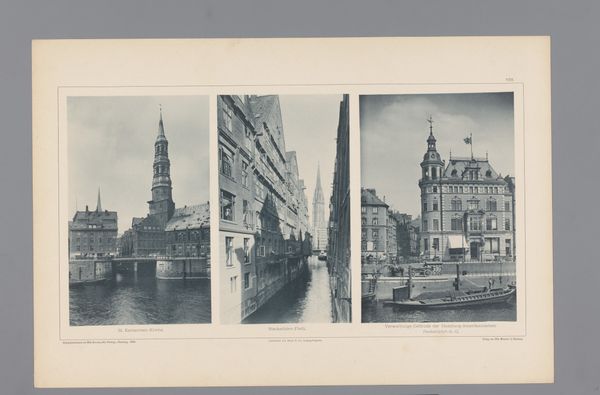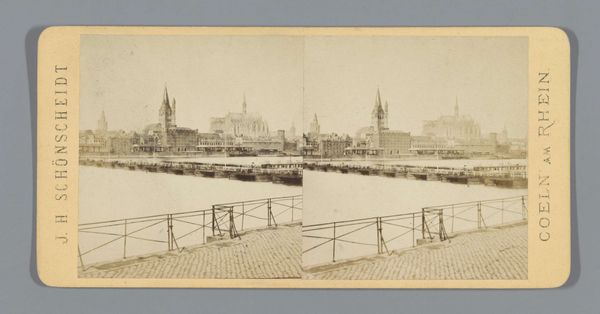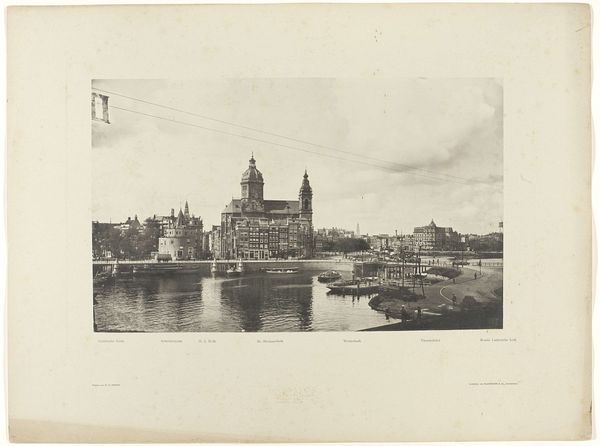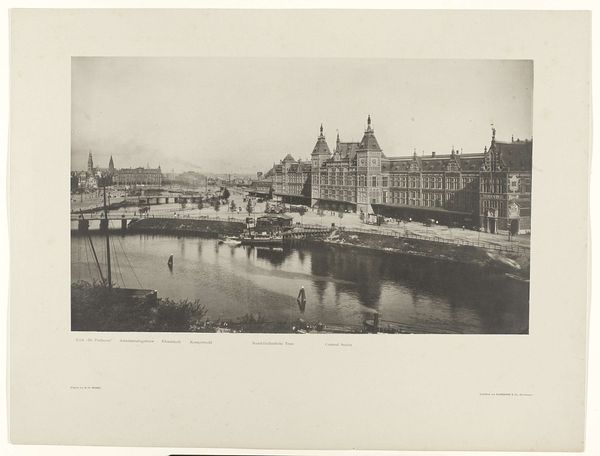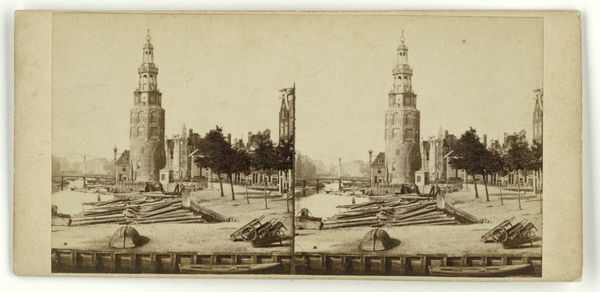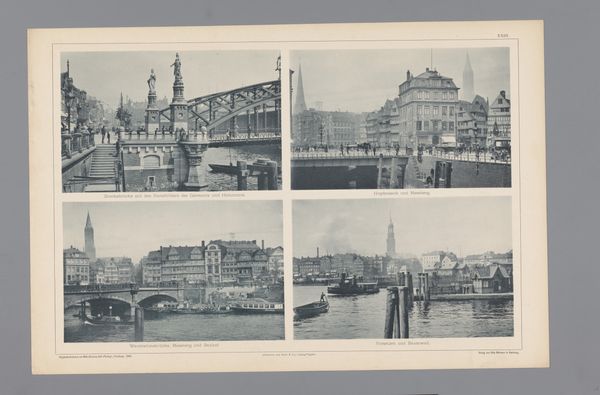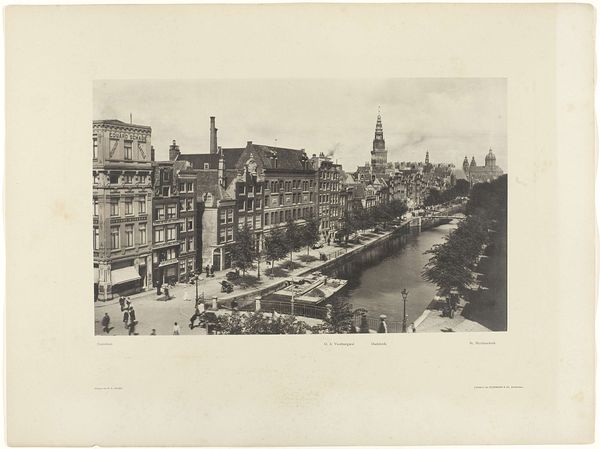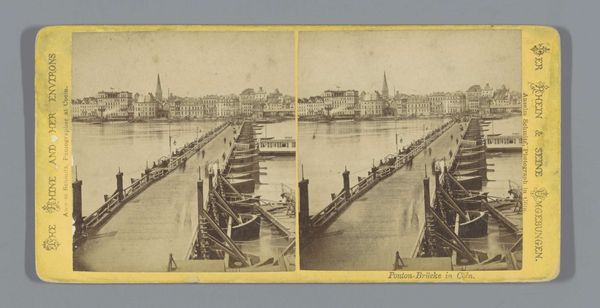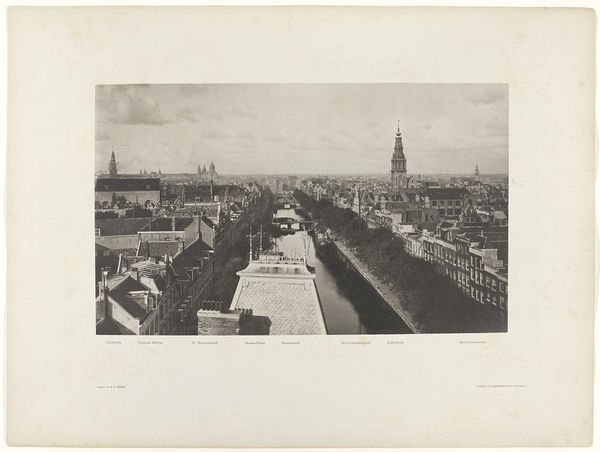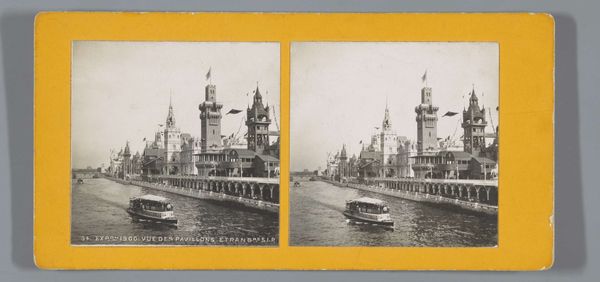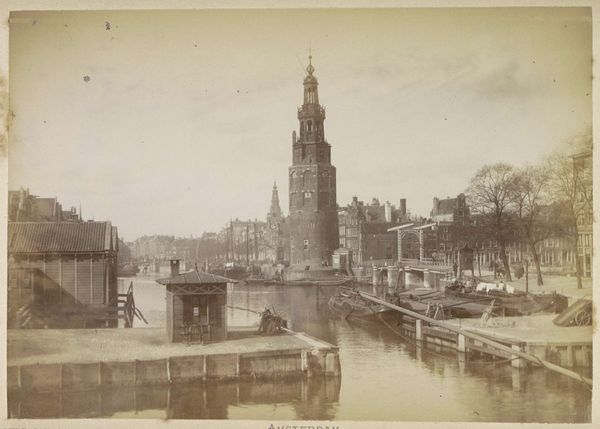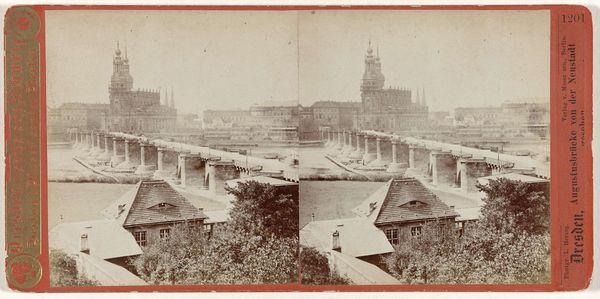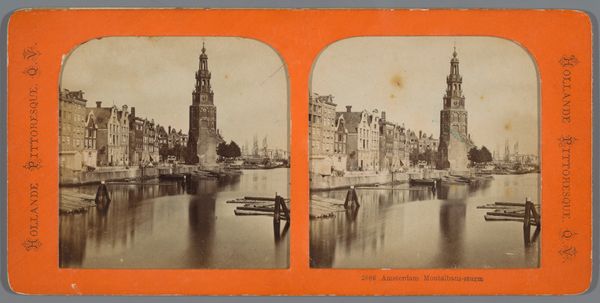
photography, gelatin-silver-print
#
landscape
#
photography
#
orientalism
#
gelatin-silver-print
#
cityscape
#
realism
Dimensions: height 84 mm, width 171 mm
Copyright: Rijks Museum: Open Domain
Curator: Here we have a gelatin-silver print entitled "Augustusbrug in Dresden," attributed to Ferrier Pére-Fils et Soulier, dating to somewhere between 1855 and 1865. Editor: It strikes me as profoundly stable. That bridge, cutting a solid horizontal line across the frame, those robust piers—they speak of enduring presence and connection. The muted tones almost suggest a dream, or perhaps, a collective memory. Curator: Indeed. What interests me is the choice of medium itself. The gelatin-silver print allowed for sharper detail and a broader tonal range than earlier photographic processes. Notice how this enhanced resolution captures not just the grand architecture but the textures of the stone and water—essential elements in representing this urban landscape. It's a relatively efficient process capable of large editions of photos as souvenirs. Editor: And the architectural symbolism is rich! Bridges often represent transitions, connections between different realms, physical and metaphorical. That majestic church dominating the skyline embodies spiritual aspirations and power. There is an ordered precision to the image. It whispers stories of resilience. The bridge still standing after the world wars, the buildings and culture surviving bombing and disaster. Curator: Don't overlook the implications of representing urban infrastructure at this moment in history. Bridges facilitated trade and the movement of goods and people, essential components in the industrialising economy, after all. Photography then offered a perfect means of documentation. Editor: I'm also curious about how viewers at the time might have perceived it. This photograph comes at a point when realism becomes something modernism turns away from. There must have been something revolutionary to making accurate records using photos rather than painting them. Did it speak of progress? Perhaps, also of nostalgia for a past rapidly fading in the face of industrial growth? Curator: I'd add, that even in its attempt at realism, the photograph offers a carefully constructed view. It shapes the narrative as much as records it. Editor: Very true. The photographer is always choosing, framing, selecting which aspects of the world to bring to our attention. This particular scene resonates with me long after I look away from it. Curator: For me, the value lies in what this gelatin-silver print tells us about the intersection of material culture and representation in 19th-century Dresden. A sturdy construction.
Comments
No comments
Be the first to comment and join the conversation on the ultimate creative platform.
